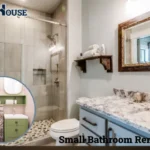Updating Kitchen Cabinets: A Comprehensive Guide for 2025
As we approach 2025, the world of kitchen design is evolving rapidly, with new trends and technologies reshaping how we think about our culinary spaces. One of the most impactful ways to transform your kitchen is by updating Kitchen cabinets.
This comprehensive guide will explore the latest trends, techniques, and considerations for updating kitchen cabinets in 2025, helping you create a space that’s both stylish and functional.
The Importance of Updating Kitchen Cabinets
Updating kitchen cabinets is more than just a cosmetic change; it’s an investment in your home’s value and your daily quality of life. Cabinets are the backbone of any kitchen, providing essential storage and setting the tone for the entire room’s aesthetic.
As we move into 2025, the focus is on creating kitchens that are not only beautiful but also sustainable, technologically advanced, and highly functional.

Current Trends in Kitchen Cabinet Design for 2025
1. Embracing Warm Tones and Natural Materials
The sterile, all-white kitchens of the past are giving way to warmer, more inviting spaces. In 2025, we’re seeing a significant shift towards brown kitchens and the use of natural wood tones.
This trend reflects a desire for warmth and connection to nature in our living spaces. Medium and dark wood tones are particularly popular, adding depth and character to kitchen designs.
2. Sustainable Materials and Eco-Friendly Choices
Sustainability continues to be a top priority in kitchen design for 2025. Homeowners are increasingly opting for eco-friendly materials like bamboo, reclaimed wood, and recycled glass for their cabinet updates.
These choices not only reduce environmental impact but also add unique textures and stories to the kitchen space.
3. Smart Integration and Hidden Technology
The concept of smart kitchens is gaining momentum, with cabinets playing a crucial role in this technological integration. In 2025, we’re seeing more cabinets designed to conceal smart appliances and incorporate charging stations, creating a seamless and clutter-free environment.
4. Color Drenching and Bold Statements
While natural wood tones are popular, there’s also a trend towards bold color choices in kitchen cabinets. Color drenching, where a single hue is used across multiple surfaces, is becoming increasingly popular.
This approach creates a cohesive and striking look, perfect for those wanting to make a statement with their kitchen design.
5. Contrasting Cabinetry
Another trend for 2025 is the use of contrasting cabinetry. This could mean combining different wood tones or pairing painted cabinets with natural wood finishes. This approach adds visual interest and depth to the kitchen space.
Methods for Updating Kitchen Cabinets
When it comes to updating kitchen cabinets, homeowners have several options to choose from, each with its own set of advantages and considerations.
Cabinet Refacing: A Cost-Effective Transformation
Cabinet refacing has emerged as a popular choice for those looking to update their kitchen without the expense and disruption of a full cabinet replacement. This process involves keeping the existing cabinet boxes while replacing the doors, drawer fronts, and visible exteriors with new materials.
Benefits of Cabinet Refacing:
- Cost-effective compared to full replacement
- Quicker installation time
- Less disruptive to daily life
- Environmentally friendly as it reduces waste
The Refacing Process:
- Removal of old doors, drawer fronts, and hardware
- Preparation of existing cabinet frames
- Application of new veneer or laminate to visible surfaces
- Installation of new doors, drawer fronts, and hardware
For a comprehensive refacing job, companies like Cabinet Cures offer a full transformation, including new solid wood doors and drawer fronts, hidden soft-close hinges, and meticulous surface preparation to ensure a flawless finish.
Cabinet Refinishing: A Fresh Look for Existing Cabinets
For those happy with their current cabinet layout and structure, refinishing offers a way to breathe new life into existing cabinetry. This process involves stripping, sanding, and repainting or restaining the cabinets.
Benefits of Cabinet Refinishing:
- Most budget-friendly option
- Preserves existing cabinet structure
- Allows for significant color changes
The Refinishing Process:
- Removal of old finish through stripping and sanding
- Preparation of surfaces for new finish
- Application of primer (if painting)
- Application of new paint or stain
- Sealing for durability
Full Cabinet Replacement: A Complete Kitchen Overhaul
For those looking for a dramatic change or dealing with cabinets in poor condition, full replacement might be the best option. This involves removing all existing cabinetry and installing entirely new units.
Benefits of Full Replacement:
- Complete customization of layout and design
- Opportunity to address structural issues
- Ability to incorporate the latest storage solutions and technologies
Considerations for Replacement:
- Most expensive option
- Longest installation time
- Most disruptive to daily life
Design Elements to Consider When Updating Kitchen Cabinets
Hardware: The Jewelry of Your Cabinets
Updating cabinet hardware is a simple yet effective way to transform the look of your kitchen. In 2025, we’re seeing a trend towards minimalist, sleek hardware in finishes like brushed gold, matte black, and aged brass.
Lighting: Illuminating Your New Cabinets
Proper lighting can enhance the beauty of your updated cabinets. Consider incorporating under-cabinet lighting or interior cabinet lighting to showcase your new finishes and improve functionality.
Open Shelving: A Touch of Modern Design
While closed cabinets remain popular, incorporating some open shelving can add visual interest and display space for decorative items. This trend allows for a mix of practicality and personal style.
Textured Finishes: Adding Depth and Interest
In 2025, we’re seeing an increased interest in textured cabinet finishes. Reeded details, fluted patterns, and other tactile elements are being incorporated into cabinet designs to add depth and visual interest.
Sustainability and Eco-Friendly Considerations
As we move towards 2025, sustainability is becoming increasingly important in kitchen design. When updating your cabinets, consider the following eco-friendly options:
Recycled and Reclaimed Materials
Using recycled or reclaimed wood for your cabinet updates not only adds character but also reduces environmental impact.
Low-VOC Finishes
Opt for low-VOC (Volatile Organic Compound) paints and finishes to minimize harmful emissions and create a healthier indoor environment.
Energy-Efficient Storage Solutions
Incorporate energy-efficient storage solutions into your cabinet design, such as pull-out organizers that make items more accessible, reducing the time refrigerator doors are left open.
Technology Integration in Cabinet Updates
Smart technology is revolutionizing kitchen design, and cabinets are no exception. When updating your cabinets, consider these technological integrations:
Smart Storage Systems
Incorporate smart storage systems that can track inventory or suggest recipes based on the items you have.
Charging Stations
Built-in charging stations within drawers or cabinets keep devices powered while maintaining a clutter-free countertop.
Voice-Activated Features
Consider cabinets with voice-activated opening mechanisms or integrated smart assistants for hands-free operation.
Cost Considerations and Budgeting
The cost of updating kitchen cabinets can vary widely depending on the method chosen and the materials used. Here’s a general breakdown:
- Cabinet Refacing: Typically costs 30-50% less than full replacement
- Cabinet Refinishing: The most budget-friendly option, often costing 50-70% less than replacement
- Full Cabinet Replacement: The most expensive option, but offers complete customization
When for your updating budgeting cabinet , consider not just the immediate costs but also the long-term value. High-quality materials and craftsmanship may cost more upfront but can provide better durability and a longer-lasting update.
Conclusion: Creating Your Dream Kitchen for 2025 and Beyond
Updating kitchen cabinets is a powerful way to transform your kitchen, whether you’re looking for a minor refresh or a major overhaul. As we look towards 2025, the trends are clear: warmth, sustainability, and smart integration are key.
By considering these elements and choosing the right update method for your needs and budget, you can create a kitchen that’s not only beautiful and functional but also aligned with the latest design trends and technologies.
Remember, while trends can provide inspiration, the most important aspect of your kitchen update is that it reflects your personal style and meets your family’s needs. Whether you opt for a sleek, modern look with smart integrations or a warm, natural aesthetic with sustainable materials, your updating kitchen cabinets should create a space that you’ll love for years to come.




